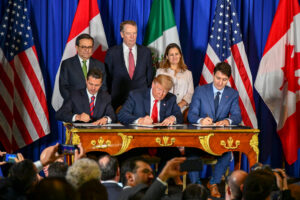India’s textile industry faces serious challenges as cheaper Chinese viscose yarn undercuts local prices, leading to significant drops in demand and production.
India Fears Trade Fallout Amid Rising Chinese 'Dumping' Practices

India Fears Trade Fallout Amid Rising Chinese 'Dumping' Practices
Concerns mount in India as cheap Chinese imports flood the market, exacerbating trade tensions amidst ongoing US tariffs.
In the bustling textile hub of Tamil Nadu, the spinning mill of 64-year-old Thirunavkarsu is feeling the strain as orders have plummeted nearly 40% in just a month. This downturn is attributed to a surge in cheaper Chinese viscose yarn imports, which have become 15 rupees ($0.18; £0.13) cheaper per kilo and are saturating Indian ports. The influx of these materials is largely a consequence of heightened trade tensions instigated by Donald Trump's imposition of steep tariffs—up to 145%—on various Chinese goods entering the United States.
India, which primarily produces its own viscose yarn while relying on imports to fill gaps, finds itself in a precarious situation. Local manufacturers like Thirunavkarsu argue they cannot compete with these lower prices due to higher production costs. Jagadesh Chandran from the South India Spinners Association stated that nearly 50 small spinning mills in southern India are reducing production due to the competitive strain posed by Chinese imports.
Chinese Ambassador Xu Feihong has attempted to alleviate concerns by pledging that China will not engage in 'market dumping', instead advocating for increased imports of high-quality Indian products. However, fears of dumping extend beyond textiles, threatening various sectors across India as Chinese exports continue to dominate the global market.
Notably, India’s trade deficit with China has swelled to $100 billion (£75 billion), driven by soaring imports including electronics and solar cells. New government measures—including a 12% tax on certain steel imports—aim to mitigate these influxes, but experts warn that India’s reliance on Chinese goods remains deeply entrenched.
Furthermore, despite local initiatives aimed at enhancing India's manufacturing capabilities, the shift has not effectively curtailed dependency on Chinese inputs. The complexity of these dynamics raises alarms, particularly as India’s exports to China have dipped below levels seen in 2014, even amidst a weakening domestic currency.
As the Indian government forms committees to examine the impact of Chinese imports, experts like Ajay Srivastava, founder of the Global Trade Research Initiative, call for urgent action. He points out that the current strategy does not seem to promote exports, with production-linked incentives instead triggering a surge in imports.
Despite increased scrutiny on Chinese trade practices globally, the dialogue between India and China is crucial in addressing the challenges posed by dumping. As countries around the world brace for the potential repercussions of these trade tensions, India must seize this moment to fortify its economic landscape against external pressures.





















